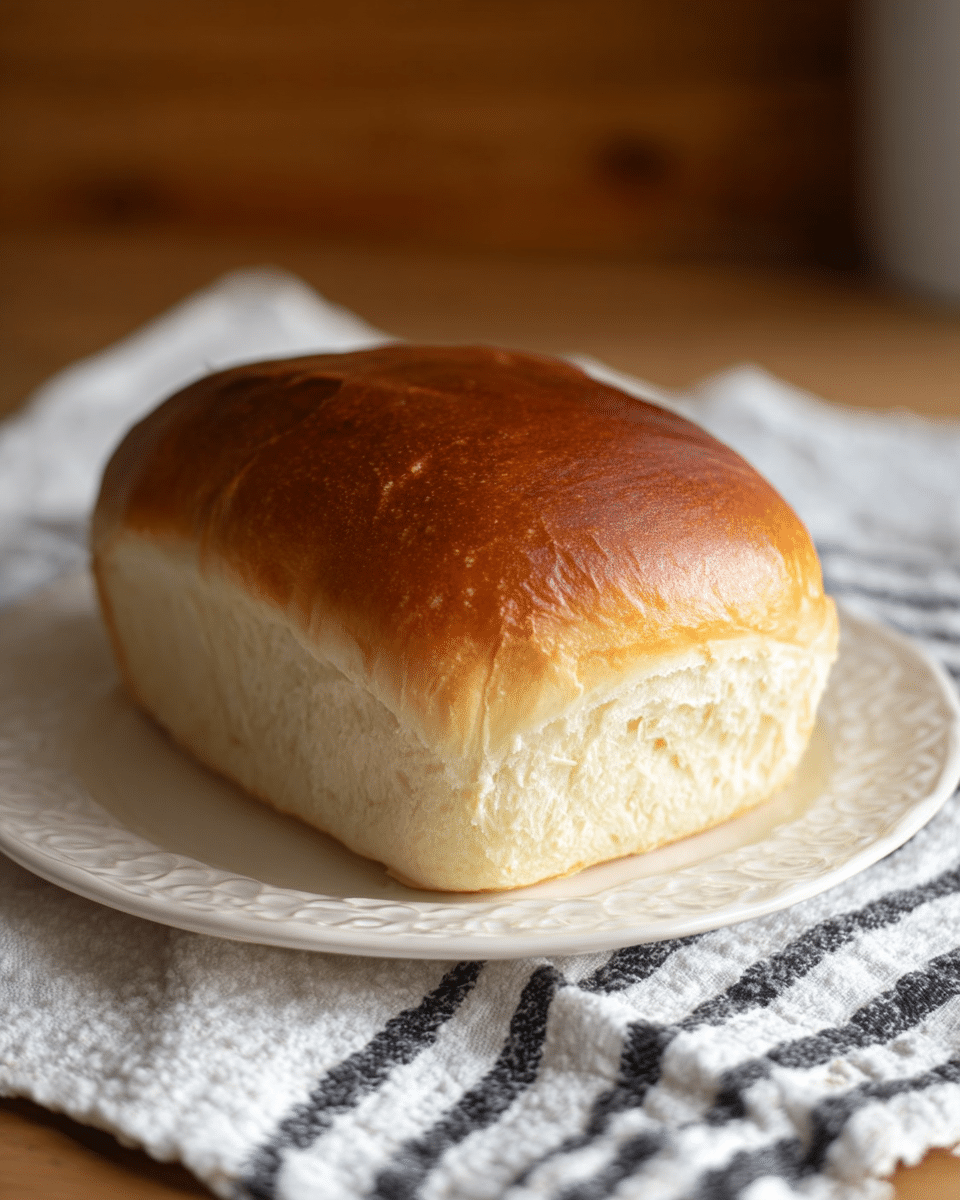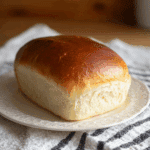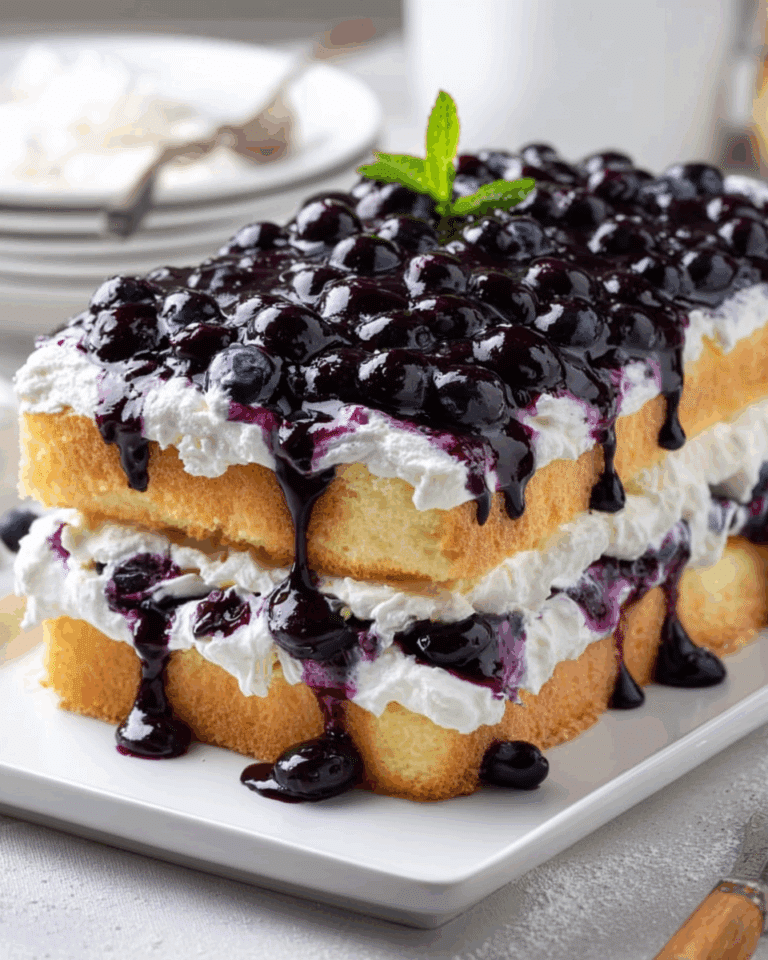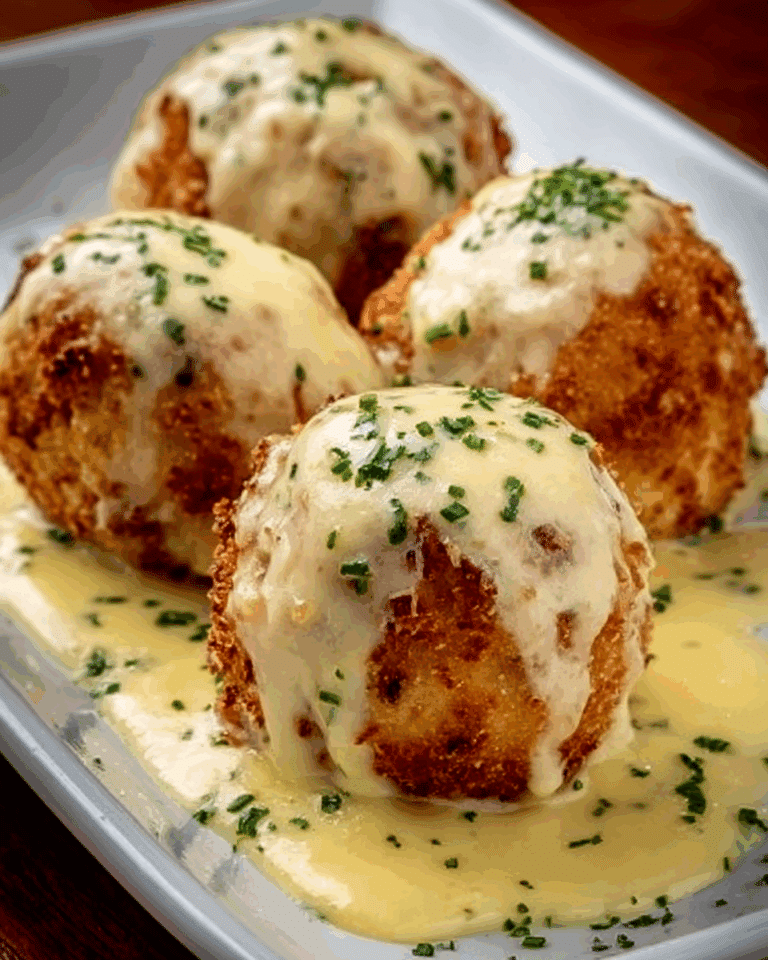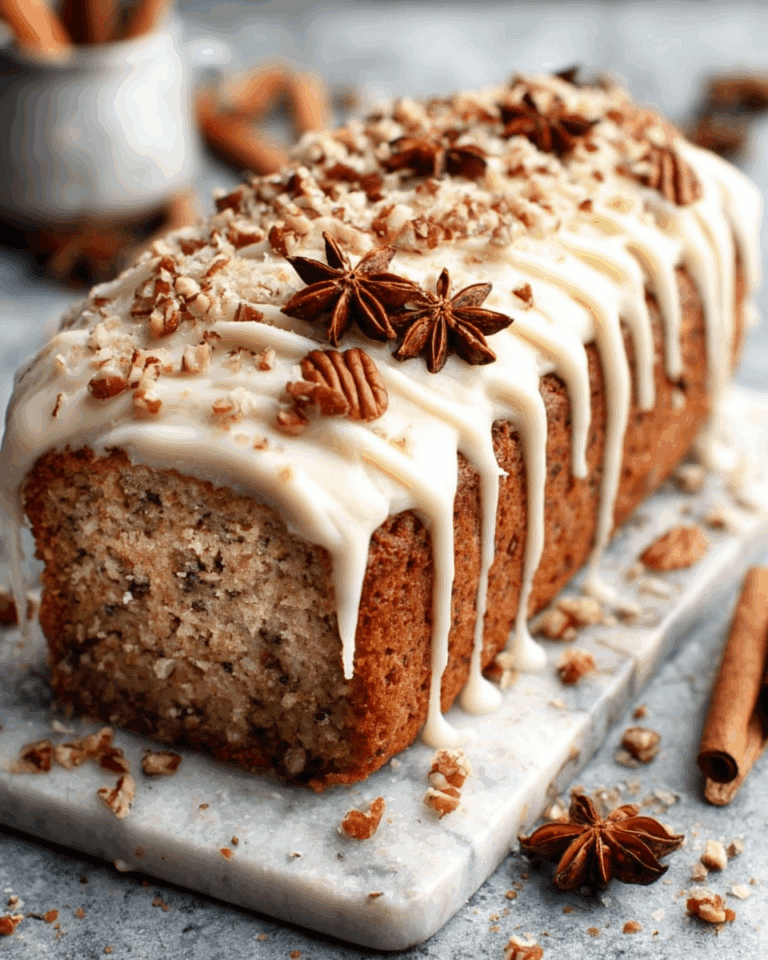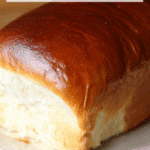Few things compare to the simple, irresistible pleasure of freshly baked bread, and the Amish White Bread Recipe exemplifies this in every bite. Famous for its soft, cloud-like crumb, subtle sweetness, and perfect golden crust, this bread has graced countless family tables through the generations. Whether you toast it for breakfast or swipe a slice through homemade soup at dinner, Amish White Bread Recipe is about comfort, tradition, and that wonderful aroma only a home bakery can deliver.

Ingredients You’ll Need
Baking Amish White Bread Recipe is delightfully straightforward, relying on a handful of pantry staples that work their own kind of magic. Each ingredient is essential, lending its part to the bread’s signature sweetness, pillowy texture, and beautiful rise.
- Water (1 cup, 110F): Just warm enough to activate the yeast, but not too hot – helps build the perfect rise and tender crumb.
- Powdered ginger (pinch, optional): A classic Amish trick – this tiny amount helps jumpstart the yeast, encouraging a happier, bubblier dough.
- Milk (1 cup, 110F): Adds richness and complexity, giving the bread its signature softness and slight sweetness.
- Sugar (⅔ cup, or less to taste): Feeds the yeast and creates that irresistible sweetness (reduce a bit if you prefer less sweet bread).
- Active dry yeast (1 ½ tablespoons): The quiet powerhouse behind fluffy, high-rising loaves – fresh yeast is key!
- Salt (1 ½ teaspoons): Intensifies flavor and keeps the bread wonderfully balanced instead of bland or overly sweet.
- Vegetable oil or melted butter/coconut oil (¼ cup): Infuses richness and gives the crumb its silky, tender structure (use your favorite for a unique twist!).
- Bread flour (5-½ cups, more or less as needed): The protein in bread flour helps develop a chewy crumb and sturdy structure perfect for slicing.
- Butter, melted (2 tablespoons for brushing): Glow up those golden crusts – a soft, buttery finish keeps each loaf extra luscious!
How to Make Amish White Bread Recipe
Step 1: Activate the Yeast
Start by dissolving the sugar in the warm water and milk in a spacious mixing bowl – the warmth wakes up your yeast, while the sugar gives it a head start on feasting. Sprinkle in the yeast (and that optional pinch of ginger if you’re feeling adventurous), and let the mixture sit for 5–10 minutes. Watch as it transforms into a creamy, foamy layer – that’s your yeast bubbling with life!
Step 2: Build the Dough Base
Once your yeast is luscious and frothy, stir in 1 cup of the bread flour – this helps the dough start taking shape. Follow up with the salt and oil, blending it all together until combined. The mixture should start to look like a thick batter at this stage.
Step 3: Add Remaining Flour and Knead
With your mixer running (or by hand if you’re feeling old-school), gradually add the remaining flour, a cup at a time, until the dough pulls away from the sides of the bowl and forms a soft, slightly tacky ball. Knead with a stand mixer for about 5 minutes, or by hand on a floured surface for 10 minutes, adding flour only as needed to prevent sticking. The finished dough should be smooth, elastic, and just slightly tacky to the touch.
Step 4: First Rise
Lightly oil a large, clean bowl and nestle your dough ball inside, turning it to coat the top with oil. Cover with a damp cloth and let it rise in a warm, cozy place for about an hour, or until doubled in size. The anticipation builds as the dough puffs up, filling your kitchen with promise!
Step 5: Shape the Loaves
Punch down the risen dough to release excess air, then knead briefly for roughly three minutes. Divide dough in half, and let the portions rest for five minutes – this quick little nap relaxes the gluten, making shaping a breeze. Roll each half into a loaf shape and place them in greased 9×5-inch loaf pans. Brush the tops lightly with melted butter for that classic, soft crust.
Step 6: Second Rise
Let your loaves rest and rise, uncovered, for about 30 minutes. They should puff up about an inch over the rim of the pans – a sign your bread is ready for the oven! This stage is crucial for those fluffy, picture-perfect slices.
Step 7: Bake to Golden Perfection
Preheat your oven to 350F. Slide in your pans and bake for around 30 minutes, until the tops are golden brown and the loaves sound hollow when tapped. For precision, an instant-read thermometer poked into the center should register 190F. If you love a super-soft crust, brush the hot loaves with melted butter and cover them with a clean tea towel while they cool for a few minutes. Once slightly cooled, remove from pans and allow to finish cooling on a rack, still covered.
How to Serve Amish White Bread Recipe
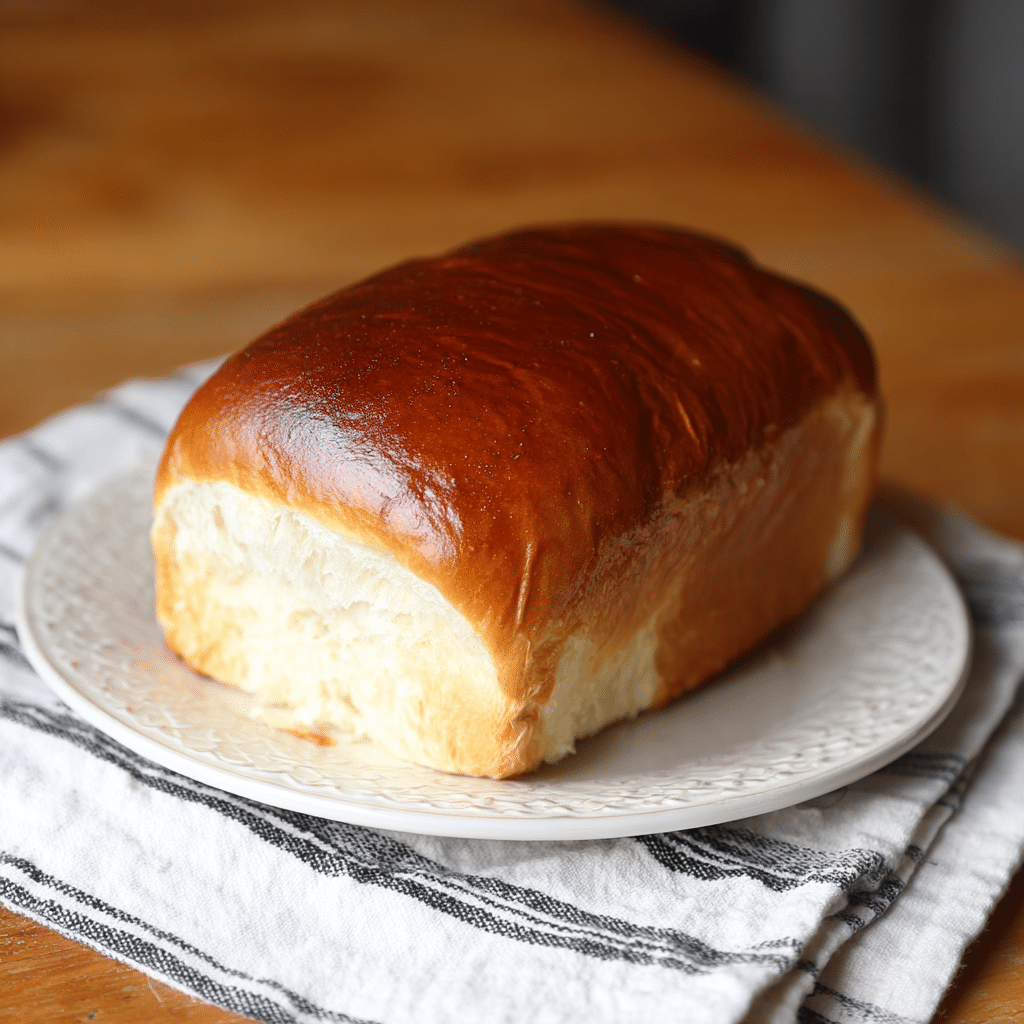
Garnishes
While Amish White Bread Recipe truly shines on its own, try slathering slices with high-quality butter for a velvety finish. For bolder flavors, a swipe of homemade jam, a dusting of cinnamon sugar, or a drizzle of local honey make each bite extra special. Even a pinch of flaky sea salt can turn a simple slice into a melt-in-your-mouth treat.
Side Dishes
This bread is born to accompany almost anything. Toast thick slices for breakfast, serve alongside hearty soups and stews, or use as a base for the ultimate grilled cheese. Pair with creamy scrambled eggs, garden-fresh salads, or classic comfort foods like chicken noodle soup – it soaks up every drop!
Creative Ways to Present
Why not get playful? Cube your Amish White Bread Recipe for bread puddings, French toast, or savory stuffing. Grill slices for crostini, or shape individual rolls for an easy side at family gatherings. Impress guests with mini sandwiches layered with cheese and veggies, or shape the dough into knots and braids for holiday bread baskets.
Make Ahead and Storage
Storing Leftovers
Once completely cool, wrap your loaves in plastic wrap or aluminum foil and they’ll stay soft and lovely for up to two days at room temperature. For super-fresh slices every time, only cut what you need and keep the rest tightly wrapped to lock in moisture.
Freezing
Amish White Bread Recipe is a dream to make ahead thanks to its freezer-friendly nature. Simply wrap the cooled loaves (whole or sliced) in a double layer of plastic wrap plus foil. Freeze for up to three months. For everyday convenience, slice before freezing so you can thaw individual pieces as needed.
Reheating
For that freshly baked taste, sprinkle frozen or room-temperature slices with a bit of water, then warm in a 300F oven (wrapped in foil) for about 10 minutes. Toasting is always a reliable option, too. If you froze a whole loaf, let it thaw on the counter overnight for best texture.
FAQs
Can I make this bread without a stand mixer?
Absolutely! While a stand mixer speeds things up, this dough is very forgiving and can be kneaded by hand. Just expect a little extra elbow grease during the kneading stage, and add flour as needed to keep the dough from sticking.
How do I know if my yeast is still good?
If your yeast mixture doesn’t foam up after 10 minutes in the warm milk and water, your yeast may be old or expired. Always check the expiration date, and consider proofing a small portion ahead of time if you’re unsure.
Is it possible to reduce the sugar?
Yes, you can cut the sugar in half for a less sweet bread. The texture may change slightly (a little less tender), but the loaf will still turn out beautifully and slice easily.
What kind of oil is best for Amish White Bread Recipe?
It comes down to personal taste! Many bakers love coconut oil for a hint of sweetness, but light vegetable oil or melted butter work just as well. Just make sure whatever oil or fat you use is melted and cooled before adding to the dough.
Can I use all-purpose flour instead of bread flour?
If you only have all-purpose flour, you can still make Amish White Bread Recipe, though your loaves may be slightly less chewy and rise a bit less dramatically. The end result will still be soft, fluffy, and delicious—just with a slightly lighter crumb.
Final Thoughts
Baking your own Amish White Bread Recipe at home is an act of both tradition and pure joy. With its heavenly aroma and tender, sweet crumb, this bread quickly becomes a staple you’ll return to again and again. If you’ve never tried homemade bread before, this recipe is the perfect introduction—simple, generous, and utterly foolproof. Give it a try, and let your house be filled with the warmth of true comfort baking!
PrintAmish White Bread Recipe
Amish white bread is a classic homemade bread recipe that yields soft, fluffy loaves perfect for sandwiches or toast. With simple ingredients and easy steps, this recipe will become a staple in your home.
- Prep Time: 30 minutes
- Cook Time: 30 minutes
- Total Time: 2 hours 30 minutes
- Yield: 2 loaves
- Category: Bread
- Method: Baking
- Cuisine: American Heritage
- Diet: Vegetarian
Ingredients
For the Bread:
- 1 cup water (110°F)
- 1 pinch powdered ginger (optional)
- 1 cup milk (110°F)
- ⅔ cup sugar
- 1 ½ tablespoons active dry yeast
- 1 ½ teaspoons salt
- ¼ cup vegetable oil or melted butter
- 5–½ cups bread flour
- 2 tablespoons butter, melted (for brushing)
Instructions
- Conventional Method: Dissolve sugar in warm water and milk. Whisk in yeast and let it get foamy. Add flour, salt, and oil. Knead until dough is smooth.
- Hand Kneading: Mix in flour to form a sticky dough. Knead on a floured surface until smooth and elastic.
- Rising and Shaping: Let dough rise until doubled. Punch down, divide, shape into loaves, let rise again, then bake.
- For a Soft Crust: Brush with melted butter, cover with a towel after baking.
- Bread Machine Instructions: Add ingredients in machine, select white bread cycle, and start. Turn off during the second rise and restart before baking.
Notes
- Store wrapped for up to 2 days at room temperature or freeze for longer.
- Try reducing sugar for a less sweet loaf.
- Experiment with different oils for varied flavors.
- Use natural dough enhancers like ginger or potato water for better rising.
Nutrition
- Serving Size: 1 slice
- Calories: 240 kcal
- Sugar: 9g
- Sodium: 239mg
- Fat: 6g
- Saturated Fat: 4g
- Unsaturated Fat: 2g
- Trans Fat: 0g
- Carbohydrates: 40g
- Fiber: 1g
- Protein: 6g
- Cholesterol: 5mg

